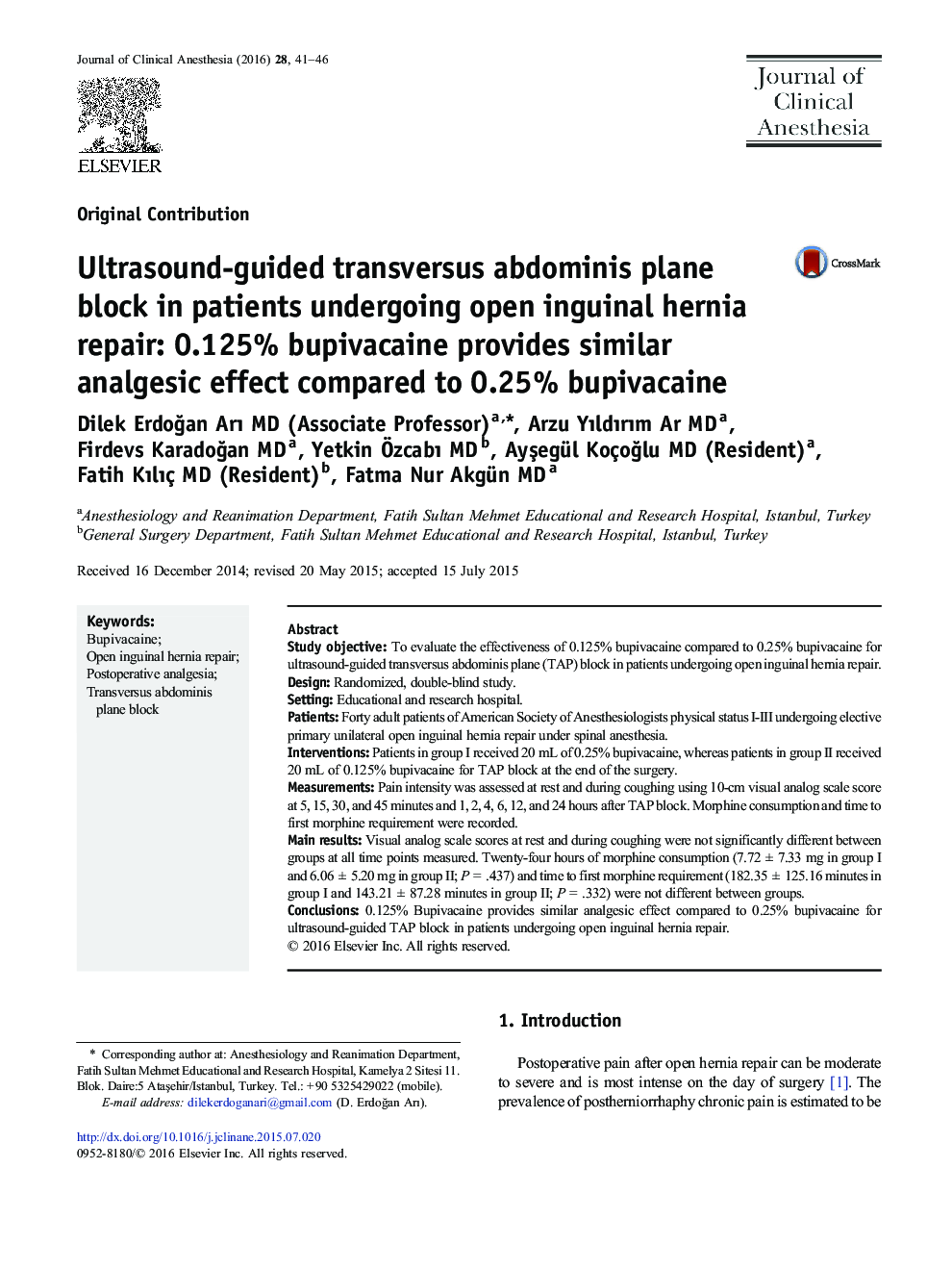| Article ID | Journal | Published Year | Pages | File Type |
|---|---|---|---|---|
| 2762351 | Journal of Clinical Anesthesia | 2016 | 6 Pages |
•The risk of systemic toxicity of local anesthetic used for TAP block should always be considered.•Adequate diffusion of the local anesthetic is visible on the ultrasound.•It may be possible to reduce the doses of local anesthetics.•We hypothesized that 0.125% bupivacaine could be sufficient.•0.125% Bupivacaine provides similar analgesic effects compared to 0.25% bupivacaine.
Study objectiveTo evaluate the effectiveness of 0.125% bupivacaine compared to 0.25% bupivacaine for ultrasound-guided transversus abdominis plane (TAP) block in patients undergoing open inguinal hernia repair.DesignRandomized, double-blind study.SettingEducational and research hospital.PatientsForty adult patients of American Society of Anesthesiologists physical status I-III undergoing elective primary unilateral open inguinal hernia repair under spinal anesthesia.InterventionsPatients in group I received 20 mL of 0.25% bupivacaine, whereas patients in group II received 20 mL of 0.125% bupivacaine for TAP block at the end of the surgery.MeasurementsPain intensity was assessed at rest and during coughing using 10-cm visual analog scale score at 5, 15, 30, and 45 minutes and 1, 2, 4, 6, 12, and 24 hours after TAP block. Morphine consumption and time to first morphine requirement were recorded.Main resultsVisual analog scale scores at rest and during coughing were not significantly different between groups at all time points measured. Twenty-four hours of morphine consumption (7.72 ± 7.33 mg in group I and 6.06 ± 5.20 mg in group II; P = .437) and time to first morphine requirement (182.35 ± 125.16 minutes in group I and 143.21 ± 87.28 minutes in group II; P = .332) were not different between groups.Conclusions0.125% Bupivacaine provides similar analgesic effect compared to 0.25% bupivacaine for ultrasound-guided TAP block in patients undergoing open inguinal hernia repair.
